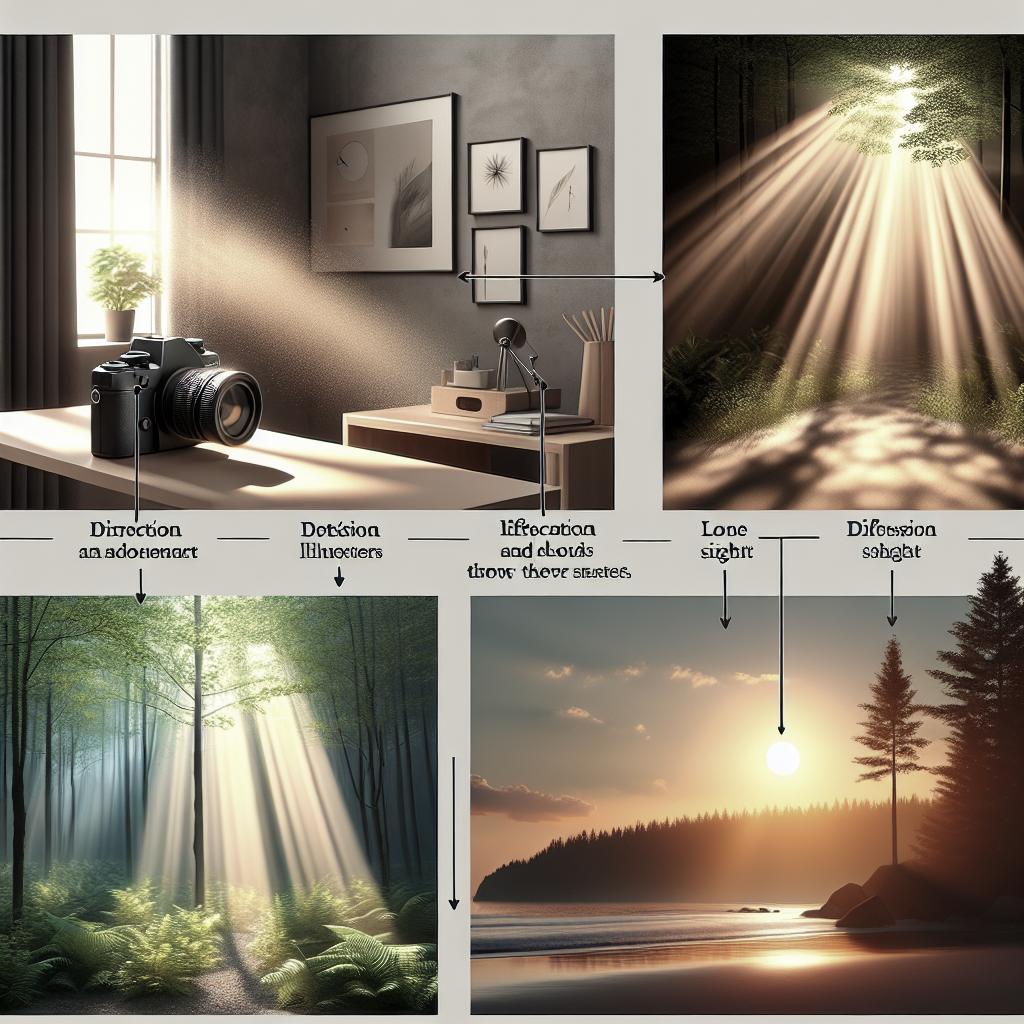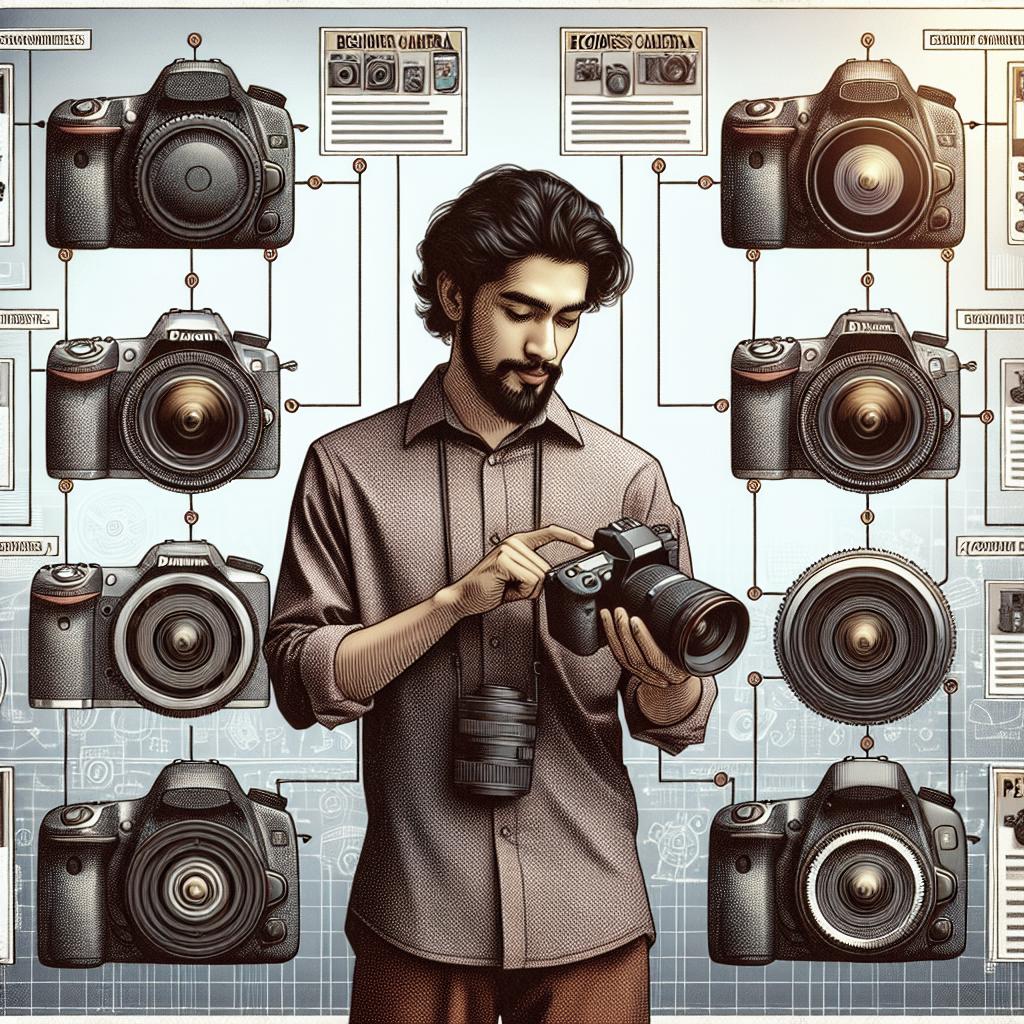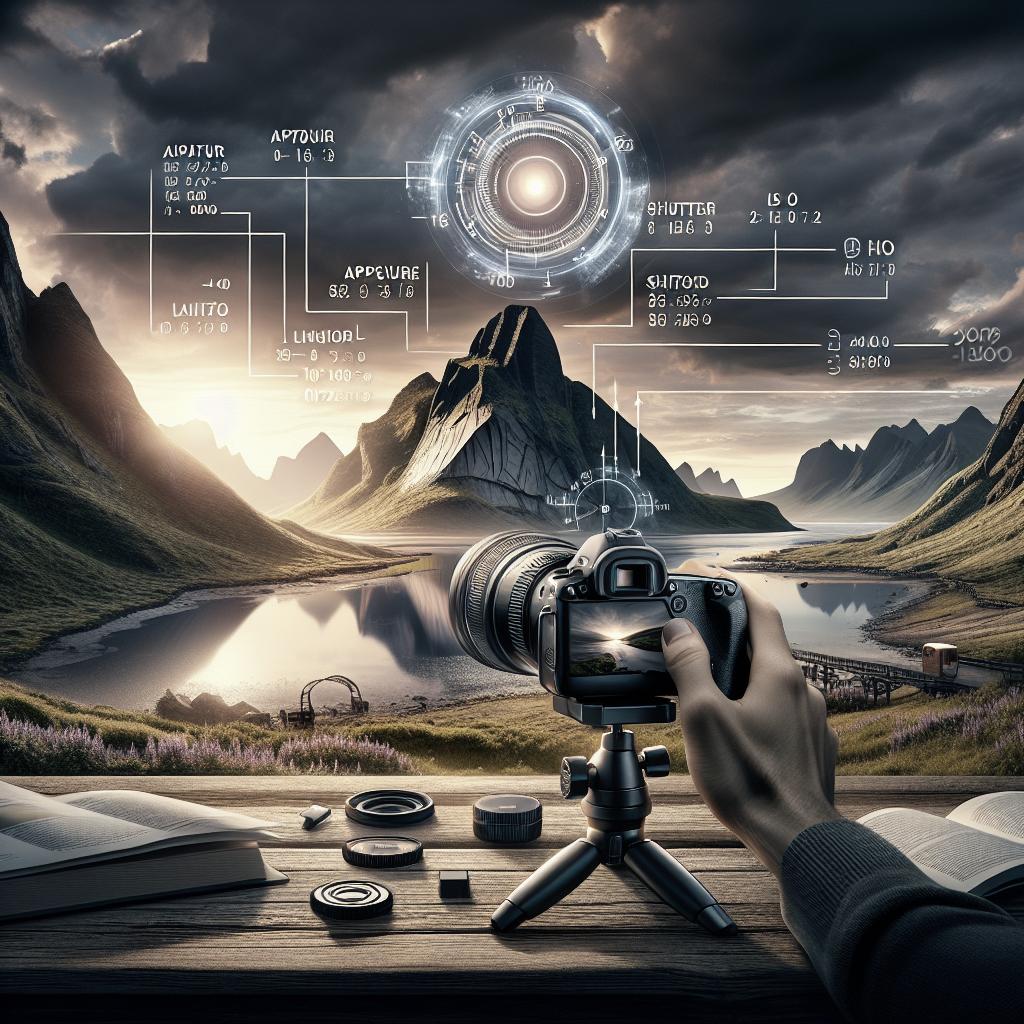“`html
Effective Use of Natural Light in Photography
Mastering the use of natural light in photography can elevate the quality of your photographs to new heights. This essential element influences not only the exposure but also the mood and texture of your images. In this post, we will demystify natural light, exploring its definition, characteristics, and applications in photography. You’ll discover the benefits of using natural light over artificial sources, and we’ll provide practical tips for shooting during different times of day, including the coveted Golden Hour. Whether you’re a seasoned professional or a budding enthusiast, leveraging natural light effectively can significantly enhance your photographic storytelling. By the end of this blog post, you’ll be armed with the knowledge to use natural light to your advantage, creating visually compelling photographs.
What is Natural Light in Photography
Natural light in photography refers to any light source emanating from the sun. Unlike artificial lights—such as studio lamps and flashes—natural light provides a unique and variable quality to images. Photographers often aim to harness this abundant resource to infuse their images with a lifelike and authentic feel, often impossible to replicate artificially.
Natural light can change throughout the day and in various weather conditions, each offering distinct opportunities and challenges for photographers. Understanding these nuances allows photographers to select the optimal lighting conditions that suit the mood or narrative of their final image.
NATURAL LIGHT DEFINITION
In the simplest terms, natural light is the illumination provided by the sun. It is dynamic, changing with the daily and seasonal cycles, and offers an infinite color palette and intensity levels that have inspired artists for centuries.
Because it is ever-changing, natural light requires photographers to be adaptable and to hone their skills to capture it effectively. Practitioners of natural light photography often develop a keen sense of timing and environmental awareness, essential in crafting compelling images.
What is natural light in photography used for?
Natural light in photography can define moments with its subtle yet powerful influence on ambiance and emotion. Photographers use it to create authentic portraits, striking landscapes, and narrative-driven images that resonate with viewers on an instinctual level.
Natural light is also valuable for its cost-effectiveness and accessibility. Many photographers prefer it for on-location shoots due to its ability to realistically portray a scene without the need for complex studio setups.
Natural Light Photography Breakdown
Shooting with natural light
Shooting with natural light requires an understanding of its direction, intensity, and the effect it creates on the subject. The direction of light—whether frontal, sidelong, or backlit—can dramatically influence a photo’s mood and texture.
To successfully harness natural light, photographers need to consider the various elements, such as using reflectors or diffusers, choosing the right time of day, and understanding weather impacts on lighting conditions.
What is natural light photography?
Natural light photography focuses on utilizing sunlight as the primary light source for images. It is prized for its natural tone and convenient ubiquity, allowing photographers to create authentic-looking scenes.
This style often emphasizes subtle beauty, capturing ordinary life with the authenticity and highlighting details enhanced by the natural spectrum of light.
Photos with natural light vs artificial
Natural vs artificial light
Natural light and artificial light each bring their unique advantages and challenges to photography. Natural light is variable and often yields a more genuine look, but it requires the photographer to adapt to rapidly changing conditions.
Conversely, artificial light provides control and consistency, allowing photographers to create a specific look regardless of the time or setting. Many artists blend both light sources for creative versatility.
Natural Lighting Photography Tips
When using natural light, one of the best practices includes shooting during the Golden Hour—shortly after sunrise or before sunset—when the light is soft and diffused, casting a warm glow that’s highly flattering for subjects.
Photographers should also be mindful of shadows and highlights, using equipment like reflectors to fill in shadows or flags to reduce overexposed areas, ensuring well-balanced compositions.
When is Golden Hour?
The Golden Hour is a unique time of day when sunlight becomes softer and more diffused. It occurs shortly after sunrise and again just before sunset. During these times, the sun’s position in the sky creates long shadows and a magical glow that is deeply appreciated in photography for its warm tones and flattering effects.
Given its name for the rich golden hues it imparts to images, photographers often go to great lengths to capture scenes during this time, given the brief and fleeting nature of the Golden Hour.
Related Posts
- Discover Shooting Techniques with Minimal Equipment
- Top Photography Destinations You Must Visit
- Enhancing Portraits with Natural Light
Showcase your vision with elegant shot lists and storyboards.
Great photographers tell stories through their images, and using shot lists and storyboards can help you plan your photographic narrative effectively. Organizing your shots ensures that you fully utilize natural light conditions to bring your creative vision to life.
Planning ahead with a clear outline of shots also alleviates pressure during a shoot, allowing more time to be spent on capturing the perfect interaction of subject and light.
Final Thoughts
Natural light is an invaluable tool in photography with its dynamic qualities and unparalleled ability to convey authenticity. By mastering the art of using natural light, photographers can create remarkable and compelling images that resonate with audiences. Understanding the difference between natural and artificial light, and knowing when to utilize each, will expand your creative capabilities in this digital age.
Up Next
With your newfound knowledge of natural light, explore further by delving into advanced techniques for blending natural and artificial light in your photography toolkit or learning about post-processing to enhance naturally lit images.
| Concept | Description |
|---|---|
| Natural Light | Sunlight as a dynamic light source, varying by time and weather conditions, crucial for authentic photography. |
| Golden Hour | The time during sunrise and sunset when sunlight is softer and casts a warm glow. |
| Natural vs Artificial Light | Natural light offers dynamic and genuine looks, while artificial light provides control and consistency. |
| Lighting Tips | Maximize Golden Hour use, manage shadows, and adapt to weather conditions for the best results. |
“`


